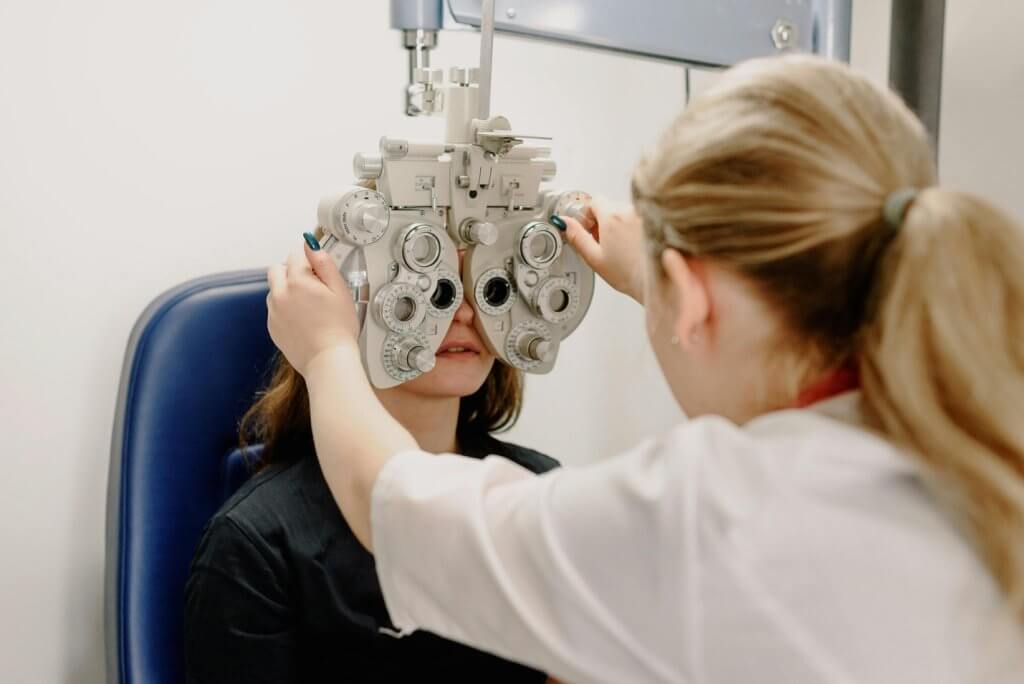LASIK eye surgery remains one of the most effective methods for correcting refractive errors and reducing dependence on corrective lenses. By reshaping the cornea with laser precision, this procedure enhances visual clarity for individuals with nearsightedness, farsightedness, and astigmatism. For those in Houston, finding the best LASIK in Houston can make all the difference, as the city is home to highly skilled surgeons and cutting-edge facilities. Understanding the procedure, its benefits, risks, and recovery process can help individuals determine whether LASIK is the right choice for their vision needs.
How LASIK Works
LASIK, or laser-assisted in situ keratomileusis, utilizes a specialized laser to reshape the cornea. The cornea plays a crucial role in focusing light onto the retina, which allows the brain to process clear images. When the cornea’s shape is irregular, light bends improperly, causing vision distortion. LASIK corrects these irregularities by removing microscopic amounts of corneal tissue, allowing light to focus correctly on the retina.
The procedure involves several key steps:
- Creating the Corneal Flap – A femtosecond laser or microkeratome blade creates a thin flap on the surface of the cornea.
- Reshaping the Cornea – An excimer laser removes precise amounts of corneal tissue to improve light refraction.
- Repositioning the Flap – The flap is placed back onto the eye, where it naturally adheres without the need for stitches.
This minimally invasive approach ensures a quick recovery and minimal discomfort, making LASIK a preferred choice for many individuals seeking vision correction.
Benefits of LASIK Surgery
LASIK offers significant advantages for those looking to reduce or eliminate their reliance on glasses and contact lenses:
- Rapid Vision Improvement – Many patients experience clearer vision within 24 hours.
- Long-Term Results – The effects of LASIK are typically permanent, with minimal regression over time.
- Minimized Dependence on Corrective Lenses – Most individuals achieve 20/40 vision or better, reducing the need for glasses or contacts.
- Quick Recovery – The healing process is generally fast, allowing individuals to return to normal activities within a few days.
In addition, LASIK has a high success rate, with most patients reporting significant improvements in their vision quality.
Who is a Good Candidate for LASIK?

While LASIK is highly effective, not everyone qualifies for the procedure. Candidates should meet specific criteria to ensure optimal results:
- Stable Prescription – Vision should be stable for at least a year before surgery.
- Healthy Corneas – Sufficient corneal thickness is necessary to allow for safe reshaping.
- Good Overall Eye Health – Conditions such as keratoconus, glaucoma, or severe dry eye syndrome may disqualify candidates.
- General Health Considerations – Autoimmune disorders and certain medications may interfere with healing.
A thorough preoperative evaluation by an ophthalmologist determines whether a patient meets the necessary requirements for LASIK.
Potential Risks and Side Effects
Although LASIK is a widely performed procedure with a high success rate, it carries some risks:
- Dry Eyes – Temporary dryness is common during the healing process.
- Glare and Halos – Some patients experience light sensitivity or halos around lights, particularly at night.
- Undercorrection or Overcorrection – In some cases, additional adjustments may be needed for optimal results.
- Flap Complications – Issues related to the corneal flap, such as displacement or irregular healing, can occur.
Discussing potential risks with an eye surgeon can help patients make informed decisions about the procedure.
Recovery and Post-Operative Care
Following LASIK surgery, proper post-operative care is essential to support healing and optimize visual outcomes. Patients may experience mild discomfort, sensitivity, and fluctuations in vision during the initial recovery period.
Key post-operative care instructions include:
- Avoid Rubbing the Eyes – Rubbing the eyes can dislodge the corneal flap and interfere with healing.
- Use Prescribed Eye Drops – Medications help prevent infection and manage inflammation.
- Limit Screen Time – Reducing screen exposure minimizes eye strain and dryness.
- Wear Protective Eyewear – Sunglasses protect against bright light and environmental irritants.
- Attend Follow-Up Appointments – Regular check-ups ensure proper healing and address any concerns.
Most patients achieve stable vision within a few weeks, though minor fluctuations can continue for several months.
Alternative Vision Correction Procedures
For individuals who may not be suitable candidates for LASIK, alternative refractive surgeries are available:
- PRK (Photorefractive Keratectomy) – Similar to LASIK but without a corneal flap, PRK is a better option for individuals with thin corneas.
- SMILE (Small Incision Lenticule Extraction) – A minimally invasive procedure that corrects myopia through a small corneal incision.
- ICL (Implantable Collamer Lenses) – Lenses implanted inside the eye to correct vision without altering the cornea.
Each procedure has its own benefits and considerations, which should be discussed with an eye care specialist.
Final Thoughts
LASIK continues to be a leading solution for vision correction, offering life-changing benefits for many individuals. By improving visual clarity and reducing dependence on corrective lenses, the procedure enhances daily life and overall convenience. Consulting with a qualified ophthalmologist is the first step in determining whether LASIK is the right option based on individual vision needs and health considerations.
Cassia Rowley is the mastermind behind advertising at The Bad Pod. She blends creativity with strategy to make sure ads on our site do more than just show up—they spark interest and make connections. Cassia turns simple ad placements into engaging experiences that mesh seamlessly with our content, truly capturing the attention of our audience.


